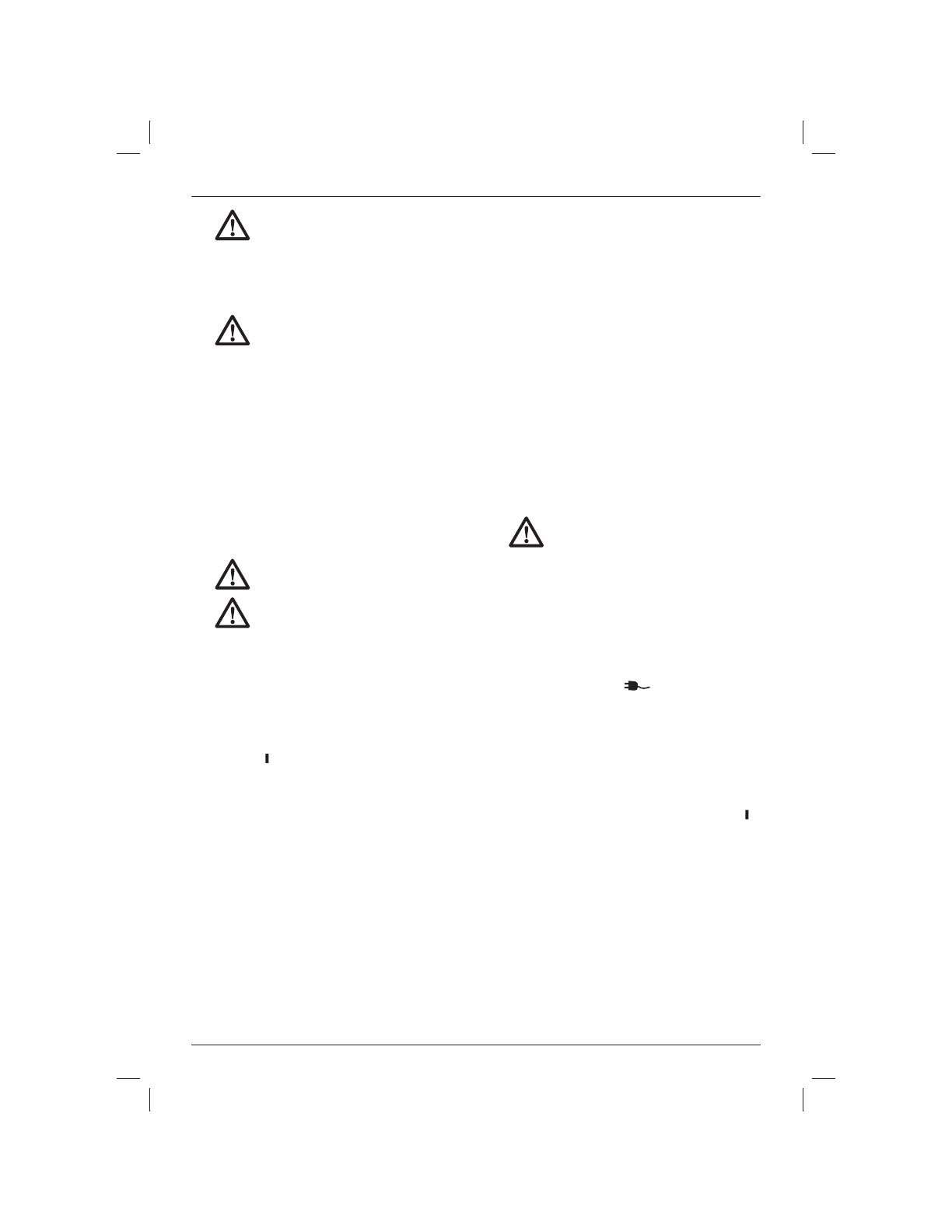
ENGLISH
31
WARNING: The filters (i) must always
be in place while vacuuming, except
as described under Wet Pick Up
Applications under Operation. When
vacuuming fine dust, you may also use
an additional paper bag or fleece bag to
make emptying the canister easier.
WARNING: Dust collection bags must
be used for dust Class M.
1. If optional paper or fleece bag (t) is to be used,
install as shown in figure 2.
NOTE: Be careful not to tear the bag. Place
bag securely onto inlet (j) to provide a tight seal
for maximum dust collection performance.
2. Place the vacuum head (c) onto the canister
and secure it by closing the canister latches (d).
3. Insert end of hose (g) into twist-lock hose inlet (j)
and rotate counterclockwise to lock in place.
OPERATION
Instructions for Use (fi g. 1, 4)
WARNING: Always observe the safety
instructions and applicable regulations.
WARNING: To reduce the risk
of injury, turn appliance off and
disconnect appliance from power
source before installing and
removing accessories, before
adjusting or changing set-ups or
when making repairs. An accidental
start-up can cause injury.
1. Plug the power cord into an appropriate outlet.
2. Turn the on/off/tool control switch (o) to the ON
position ( ).
3. Set the variable suction dial (n) to the desired
position. This feature allows the user to control
the vacuum's power, suction and noise.
NOTE: This setting also controls the level of
suction. This is very useful in applications where
the vacuum creates unacceptable levels of drag
to the work piece.
4. Follow the direction under Connecting to
Power Tools to connect to the power tool to
be used.
FLOW ALARM ADJUSTMENT (FIG. 4)
Class M models only
Adjust the flow alarm adjustment control (p) to
the correct hose (or tube) inside diameter size or
accessory diameter referring to the largest section.
The chosen diameter of the adjustment control must
be equal or bigger as the largest diameter of the
used hose/tube/ accessories. The hose supplied is
32mm inside diameter. An acoustic alarm will sound
if the flow rate falls below 20 m/s. The system has a
time delay to reduce unintended alarms.
If the alarm sounds when there is no apparent
blockage:
1. Ensure that the adjustment control is set to the
correct diameter.
2. If the flow rate adjustment is set below the
maximum, increase this level until sufficient flow
through the hose causes the alarm to stop.
3. If the alarm still continues to sound, remove
hose and check that it is clear. Remove and
replace dust bag if full or blocked and check
filter condition and replace where necessary.
If the alarm continues to sound contact your local
DEWALT service agent.
CONNECTING TO POWER TOOLS (FIG. 1, 4, 5)
WARNING: Only use the outlet (m) for
purposes specified in the instructions.
1. Plug the vacuum power cord into an
appropriate outlet.
2. Plug the power tool into the outlet (m).
NOTE: See Power connection data of
power tool under Technical Data for the
power allowance of the tool to be plugged into
the outlet (m).
3. Turn on/off/tool control switch (o) to the
ACTIVATION position . This allows the
vacuum to be turned on and off automatically
by the power tool.
NOTE: The vacuum cleaner starts automatically
within 0.5 seconds and continues to run for
15seconds after the power tool has been
turned off.
4. To switch back to manual mode, turn the on/
off/tool control switch (o) to the ON position ( ).
In manual mode the tool and the vacuum are
turned on and off independent of each other.
5. Your DEWALT construction dust extractor is
fitted with the DEWALT AirLock connection
system. The AirLock allows for a fast, secure
connection between the suction hose (g) and
power tool. The AirLock connector (w) connects
directly to DEWALT compatable tools or through
the use of an AirLock adapter (available from
your local DEWALT supplier). Refer to the
Accessories section for detail on available
adapters.












